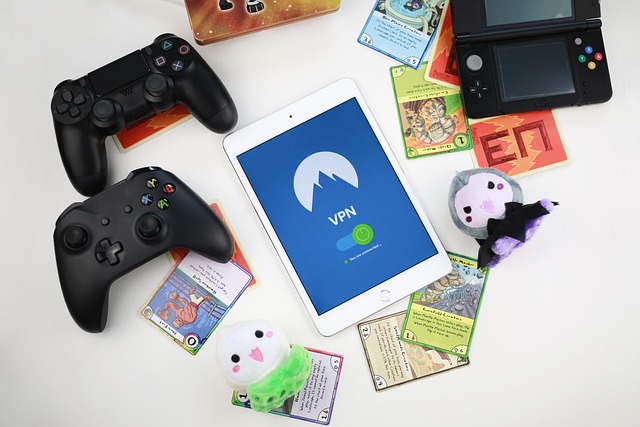Know Your Role, Play It Well
Before you even load into a match, understand who you are and why you’re there. Every class, character, or role comes with baked-in advantages—and limitations. Play a tank like a sniper and you’ll get steamrolled. Try to solo with a support class? You’re asking for trouble. Mastering your role means leveraging your strengths and shoring up your weaknesses, not trying to be the hero in every situation.
Support, offense, or defense—you’ve got a lane. Own it. If you’re healing, stay behind cover and keep eyes on teammate health bars. If you’re leading a push, don’t hesitate. Aggression matters when it’s timed right. Defensive players? Hold angles, lock down zones, and play the long game.
Now scale that up to the team level. Your group’s makeup dictates your strategy. Too much offense and not enough sustain? You’ll burn bright and die fast. All defense? You’ll get overrun. Solid team composition isn’t about picking the strongest characters; it’s about how those characters work together. Synergy, not solo flair, wins most matches. Learn where you fit—and make sure everyone else does too.
Master the Map
Winning isn’t all gunplay and reflexes—it’s often about being exactly where your opponents don’t expect you. Great players treat the map like a playbook, not a background. Start with the basics: know the spawn points. Most matches begin and pivot around them, and understanding where enemies are likely to show up gives you the first move.
Choke zones and high-traffic areas usually decide mid-game momentum. Control them, and you control the match. But don’t just sit in open spots expecting results. Use terrain and cover like a thinking player—not a target. Corners, elevation, narrow flanks—they’re not just scenery, they’re opportunities. Switch up your angle, hug walls, use shadows.
Finally, know when to reposition. Just because you won the first fight doesn’t mean you’ll win the next from the same spot. Rotate smart. Fall back if needed. Positioning wins clutch plays more than aim alone. If you’re always a step ahead in location, the fights become easier. That’s map mastery at work.
Communication Equals Coordination
If you’re not talking, you’re not winning. Smart comms—whether via voice chat or ping systems—turn a scattered team into a real unit. The key is clarity and timing. Don’t over-talk. Don’t mumble. Say what you see, quickly: “two left tunnel,” “sniper high ground,” “heal on point.” That kind of stuff saves rounds.
Use your game’s ping or quick comm system when talking isn’t an option. Mark locations, alert threats, request backup. But don’t spam. Noise kills focus.
Callouts need to be relevant. Say where, what, and sometimes who—”flanker behind B,” not “uh, someone back there maybe.” And timing matters. Mid-fight yelling rarely lands. Pre-fight warnings and post-play short corrections? Golden.
Lastly, make feedback part of the flow. Quick praise—”nice peel,” “solid hold”—goes a long way to lift morale. So does a calm correction: “let’s group up first next time.” Teams that adjust on the fly stay dangerous longer.
Keep it simple. Keep it sharp. Be the voice teammates want in their ear.
Adapt and Overcome Mid-Game
Success in multiplayer matches isn’t about sticking with the same strategy from start to finish. Winning teams and players adapt based on what’s happening in real time. The best competitors know when to pivot, change roles, or completely reimagine how they approach the game—all while staying focused on the objective.
Read and React to Opponents
Being observant pays off with smarter plays. If the enemy team begins repeating certain moves or clustering in one area, it’s your signal to counter.
- Watch for recurring flank routes, aggressive push patterns, or defensive habits
- Identify weak links or overconfident players
- Adjust your engagement timing or choose better matchups based on opponent behavior
Spot the Patterns, Hit the Gaps
Once you’re noticing trends, it’s time to exploit them. Pattern recognition is a top-tier skill that separates casual players from elite competitors.
- Use the mini-map and team callouts to spot map control tendencies
- Force enemies into predictable responses
- Set traps or misdirection plays after spotting behavioral loops
Know When to Make the Switch
Sometimes the answer isn’t better execution—it’s bringing the right tools to the fight. Knowing when to change things up mid-match can turn the tide.
- Change your loadout if your current weapons or abilities aren’t landing impact
- Shift routes or rotate lanes to reset the rhythm and surprise opponents
- Switch playstyle—go from passive to aggressive or vice versa—to stay unpredictable
Takeaway: Mid-game is about momentum. Recognize when it shifts and be the first to respond. Players who adapt on the fly can rescue matches that seem unwinnable.
Warm-Up and Review
Winning starts before the first shot is fired. Daily warm-ups with aim trainers like Aim Lab or Kovaak’s aren’t just for pros—they’re muscle-memory boosters. Ten to fifteen minutes a day sharpens reflexes and steadies your hand, especially if you’re grinding ranked where every millisecond counts.
But mechanics are just the start. Look at your losses and patterns. Do you peek wide into snipers? Overcommit to 1v3s? Keep dying in the same choke point? Spot it, name it, fix it. That’s how you level up. Watching your gameplay, even for 10 minutes after a session, pays off more than another warm-up match ever could. Just be honest—critiquing yourself isn’t about blame, it’s about building awareness.
The players who improve fastest aren’t always more talented. They’re just better at learning from their own footage, dialed in on habits and willing to tweak where needed.
Leverage Play Style-Specific Tactics
Every skilled player develops an individual approach to competition, but success comes from understanding that no single play style fits all situations. Recognizing your strengths—and aligning them with your strategy—can be the difference between a loss and a clutch win.
Aggressive vs. Tactical: Two Proven Paths to Victory
Each play style comes with advantages and vulnerabilities. Understanding when and how to apply each is essential.
Aggressive Play
Aggressive players push the pace, force confrontations, and disrupt enemy setups.
- Pros:
- Can throw opponents off balance
- Creates pressure that opens up opportunities for teammates
- Works well for mechanically skilled players with fast reflexes
- Cons:
- Risk of overextending and splitting from the team
- Can be punished heavily if timing or map awareness is off
Tactical Play
Tactical players favor patience, strategy, and information gathering to control engagements on their terms.
- Pros:
- Reduces unnecessary deaths through careful positioning
- Enables smarter team fights and ambushes
- Ideal for support players, leaders, or those with strong game sense
- Cons:
- Can lose momentum if too passive
- May require a higher level of coordination with teammates
Aligning Play Style with Personal Strengths
The most effective players don’t just copy a trending strategy—they build around what they’re naturally good at.
- Are you great at flanking and high-pressure moments? Lean toward fast, aggressive roles.
- Do you excel at communication and analysis under pressure? A tactical support or anchor role may suit you better.
- Hybrid styles often deliver the most well-rounded performance. Learn both play styles to switch based on team needs or match flow.
For deeper insight: Tailoring Your Gaming Strategy to Suit Your Play Style
Don’t Neglect Mental Game
Winning isn’t just about aim or reflexes. Your mindset can carry—or cost—you the match. When pressure builds or things go sideways, take control of your mental state before you touch your next key or controller button. Resetting after a tough loss isn’t weakness—it’s strategy.
‘Tilt’ happens when frustration overrides decision-making. You overextend, force plays, or disengage from team dynamics. It’s a silent match killer. The fix? Build awareness. If you feel the heat rising, pause. Step away, breathe, or queue dodge for 5 minutes. Emotions don’t belong in your command decisions.
Discipline is trained, not gifted. Structure your gaming sessions: set start and stop times, schedule breaks, mix in review rounds. Use warmups and cooldowns like an athlete. That rhythm creates space to reset your focus and builds long-term consistency. You don’t need to be cold-blooded—but you can’t afford to be ruled by impulse either.
Performance under pressure is a skill. Train it, protect it, and game like your decisions matter—because they do.
The Team You Choose Matters
If you’re solo-queuing every match and wondering why your win rate is stuck, you’re missing out on one of the biggest performance multipliers: a coordinated squad. Playing with the same teammates regularly lets you skip the chaos and randomness that comes with unfamiliar players. Communication flows faster. Roles get locked in without drama. Plays happen with less guesswork and more precision.
The key isn’t just finding “good” players—it’s finding ones who mesh with your rhythm. If you push fast and they play methodical, it’s going to clash. But if your play styles complement each other, your individual skill compounds into team results. That can mean a support who’s always in position when you dive, or a flanker who finishes what you start.
Over time, a trusted squad starts to move like one unit. You spot patterns in how your team handles fights, objectives, or pressure, and you start trusting each other’s instincts. Chemistry like that doesn’t just win games—it builds consistency, which is what really drives rank and skill progression.
If you want to climb, don’t just grind more matches. Build a crew that sticks.
Wrap-Up: Play Smarter, Win More
Outplaying opponents isn’t just about raw aim or high APM. The difference between good and great players? It’s who can think a few moves ahead. That comes down to mindset, map knowledge, and adaptability. If you can’t read the flow of the match, track enemy habits, and shift your tactics on the fly—you’re giving up an edge.
Know the terrain. Understand spawn timers. Recognize which opponents get greedy and when. The players who win consistently are the ones adjusting their game in real time, not just reacting.
Winning’s not about being perfect—it’s about staying sharp, making smarter choices, and learning a little from every round. Stay curious. Stay aware. And above all, never stop evolving.




